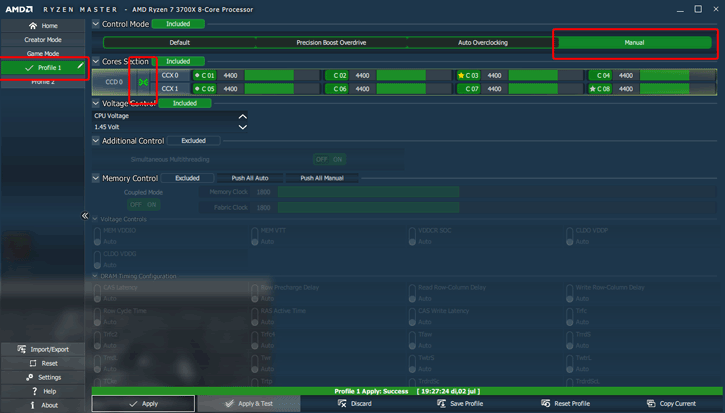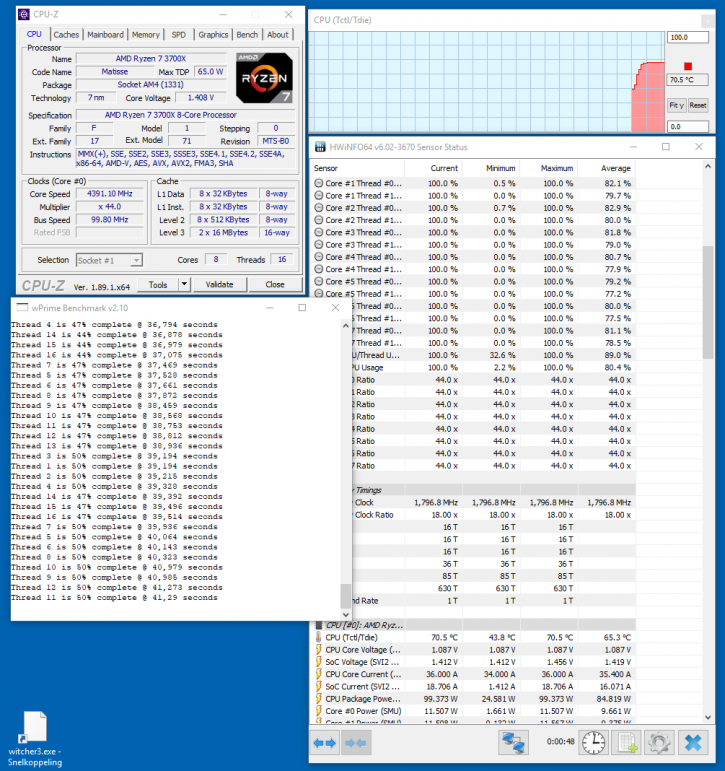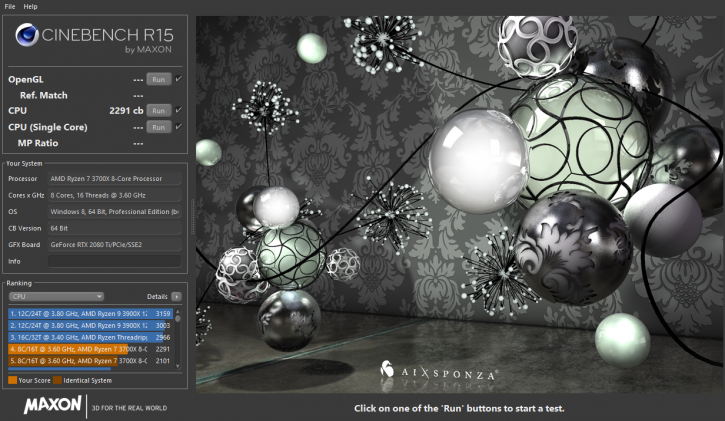Overclocking and tweaking
Overclocking and tweaking by BIOS
When you plan to overclock the processor, always invest in good hardware. And that includes a proper motherboard, power supply, memory and of course, cooling. Cheaper motherboards are often not well tuned or designed in terms of power delivery for enthusiast overclocking. That can translate into a lesser power delivery (phases) design quickly warming up the related components, causing instability. Also, never underestimate the benefits of a quality power supply. Most Silver rated ones we can recommend.
When you tweak a processor, depending on what you are trying to achieve, you often need to add voltage to the processor, that in turn creates more heat. Ergo, proper processor cooling is mandatory. Overclocking with a many-core processor (doesn't matter if that is Intel or AMD) is often more difficult to accomplish. If you overclock by BIOS (which 99% of us do), really it all comes down to the quality of the BIOS (mobo brand), and merely a few registers you need to fiddle with.
Remember that we're going for an all-core overclock and that means a lower clock frequency than the highest Turbo bin offers. What you need to do:
- Enable and start at 4300 MHz (43 Multiplier)
- Apply 1.40V to the CPU (or simply leave it at auto)
- Work your way upwards from there until the system becomes unstable and then back down at least 100 MHz.
A small tip
I mentioned voltage tweaking, the reality is that leaving the motherboard at default and altering just the CPU multiplier could be sufficient as well. A reason why you should tweak CPU voltage, however, is that you can define the lowest needed voltage for your target frequency. Less voltage equals less heat and power consumption, your choice of course. Most Ryzen Series 3000 CPUs will be able to hit a speed up-to 4.3~4.4 GHz with proper cooling on all cores. You need to keep in the back of your mind that this is an all-core tweak.
Ryzen Master
What you are going to find out is that BIOS overclocking is hard, or at least it was with the current firmware. As a result, we reverted to Ryzen Master software, which allows you to tweak in Windows 10 itself. Overall the results have been more stable. However, the software has become complicated, very complicated to the novice end-user.
In the end, we reached 4400 MHz on all cores with 1.45 Volts applied. For that to happen you'll need proper cooling and to follow our tweaking procedure:
- Select Profile 1
- Enable manual mode and only allow Cores selection and Voltage control to be included.
- Connect the cores - click the icon next to “CCD0” text until it is green (mirrored mode, sets all cores to same speed)
- If you choose separate CCXes - set C01 to say 4250
- Set Voltage to say 1.40V
- Check stability and adjust up in small steps
- Hit Apply and test
You'll notice that the test function passes a lot... and that's not accurate. We ended at 4400 MHz on all cores again, at 1.45 Volts applied. We could now run CB15 and wPrime. However, at 4400 MHz, we do feel that was pushing it.
Interesting is that the temperatures now are better under control.
The default score for the 3700X is 86 seconds, the new tweak shaves off a good 5 seconds.
For Cinebench we scored 2101, and after the tweak was applied that was 2291.
As you can observe, the tweaking results are all very modest. Imho, you are better off with these processors at default, as one or two cores can Turbo higher, which is far more beneficial in games opposed to having all cores at ~4400 MHz. So in that respect, the positives do not outweigh the negatives.





